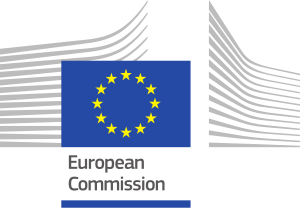 On 19 January, the EC published a strategy setting out wide-ranging ideas for the development of its financial market infrastructure. The strategy includes plans for driving the green transition in line with the European Green Deal through turning the EU financial markets into a “global green finance hub.”
On 19 January, the EC published a strategy setting out wide-ranging ideas for the development of its financial market infrastructure. The strategy includes plans for driving the green transition in line with the European Green Deal through turning the EU financial markets into a “global green finance hub.”
The strategy is intended to “stimulate the openness, strength and resilience of the EU’s economic and financial system.” It centers around three pillars:
- Strengthening the international role of the Euro.
- Increasing the resilience of EU financial market infrastructures and related critical service providers.
- Strengthening the implementation and enforcement of EU sanctions.
The EU has already made steps to bolster its financial system by completing the Banking Union and the Capital Markets Union. These are both designed to enhance its Economic and Monetary Union. An inclusive and robust financial system will stimulate the development of the EU’s green economy.
Details are provided on the importance of the euro in the green transition, which is earmarked for use as the “default currency for the denomination of sustainable finance products.” In particular, the strategy identifies the role of a strong euro and resilient financial markets in relation to the following:
- Green bonds: Around $250bn of green bonds were sold in 2019, of which almost half were denominated in euro. This includes bonds which originated from outside the euro area. The promotion of euro-denominated green bonds by the EC is highlighted as a key action point required to meet its 2030 energy and climate targets. The EC also intends to issue 30% of the Next Generation EU bonds in the form of green bonds.
- EU Emissions Trading System (ETS): The EU currently operates the world’s largest carbon market. The strategy outlines that the expansion of its ETS will form part of its legislative reform proposals in June 2021. Emissions from the maritime sector are identified as a key area to be included. The EU will also seek further opportunities to broaden the scope of its ETS with the dual aim of reducing emissions and supporting ETS trading activity in the EU.
- Trading platforms: The strategy also indicates plans for the overhaul of the way the EU trades in energy products. It highlights the need to develop trading platforms in nascent green energy markets, such as hydrogen.
The key takeaway with regard to the energy transition is the crucial role of financial markets in achieving the EU’s ambitious climate targets. The strategy also highlights the importance of both public and private investment and the need to channel funds into sustainable projects in order to achieve the envisaged economic transformation. The significance of the strategy is the recognition that a resilient framework is required which will form a basis for its future green economy ambitions.
In conjunction with its strategy, the EC published a press release, a Q&A and a Capital Markets Union factsheet, which provide further information. For further details as to how the EU intends to strengthen the implementation and enforcement of its sanctions regime, please see the post.
RELATED ARTICLES
The European Commission Releases a Strategy to Strengthen EU Sanctions
 Gravel2Gavel Construction & Real Estate Law Blog
Gravel2Gavel Construction & Real Estate Law Blog


